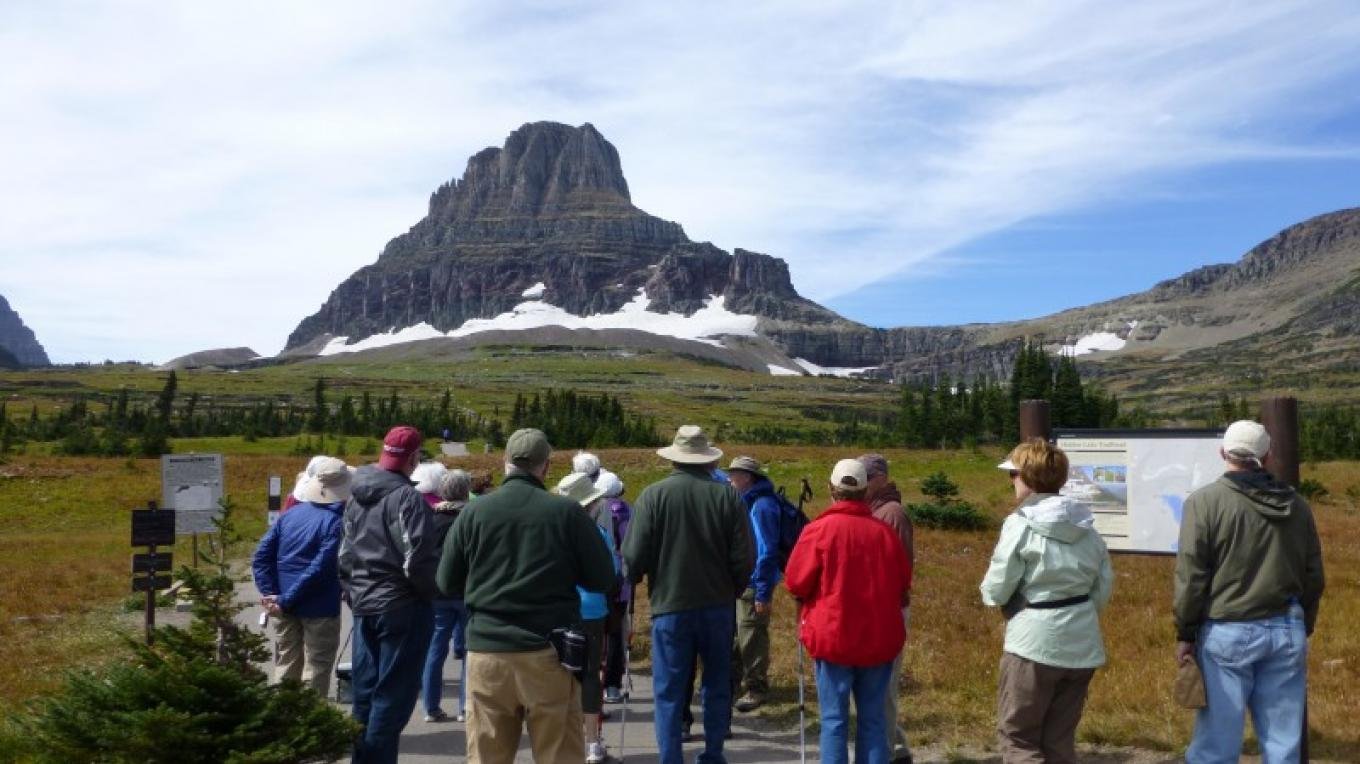Tours With Road Scholars in National Parks
The 106 national parks in the United States and Canada capture the greatest of North America’s natural wonders. The national parks, from Road Scholar Yellowstone’s historic geysers to the Great Smoky Mountains’ mist-filled woods to the Grand Canyon’s awe-inspiring grandeur, depict the North American wilderness in its most raw, most amazing form.
Nearly 900,000 people visit national parks in Canada and the United States each day, but how many of them get the whole experience? You’ll benefit from skilled teachers who can take you off the beaten road to hidden groves and secret overlooks with Road Scholar Trip. They can tell you little-known facts and show you the national parks the way they should be seen – as part of your life’s journey.
You’ve come to the correct site if you want to learn more about visiting North America’s national parks, discover the top national parks in the US and Canada, and read about the history of the US National Park Service. Explore our National Parks travel guide to learn more about the parks and how to prepare.
Tours With Road Scholars in National Parks
-
Obtaining A Park Pass
If you love national parks or want to start exploring them, you might be asking if there is a national park pass by Road Scholar Trip on Scholar Trips Coupons. You’ve struck gold! The National Park Annual Pass gives you access to every national park, forest, grassland, and other Federal Recreational Land in the United States, as well as all amenities and day-use costs! Check out the Senior Pass, which is available to U.S. citizens or residents over the age of 62. Here’s additional information.
Road Scholar Trip also provides daily and annual National Park passes that grant entrance to the country’s national parks. The Canada Parks Discovery Pass is an annual pass that provides year-round access to any of Canada’s national park system’s 80+ attractions.
Keep in mind that the cost of a National Park package with Road Scholar Trip includes all entrance costs.
-
National Park Service Information
In 2016, the National Park Service turned 100 years old! But, exactly, what does the NPS do? All 59 U.S. National Parks and 350 other federal sites are managed, maintained, and conserved by the agency. They protect national history, natural beauty, and communities all around the country.
The future of our national parks was bleak before the establishment of the National Park Service. Although Yellowstone became the first national park in 1872, the National Park Service was not established until 1916. In the meantime, Yellowstone and the other parks were run autonomously, with mixed results.
Before wealthy businessman Stephan Mather interfered, government authorities, a civilian workforce, and the United States Army all mishandled Yellowstone. He advocated the case of Yellowstone to Secretary of the Interior Franklin Lane, alarmed by the unscrupulous opportunists, poachers, and robbers that were afflicting the area.
He decided to create a new federal agency dedicated to protecting the integrity of our national parks to ensure their long-term conservation and profitability. The National Park Service was established, Yellowstone was rescued, and our National Parks are still prospering 100 years later.
-
Plan Your Visit to The National Parks
National parks provide a fantastic opportunity to see wildlife and learn more about the people and cultures who have inhabited these regions over time. Having said that, it’s critical to be prepared when visiting national parks.
Consider these national park travel suggestions to make your next adventure a success:
Consider the time of year and the optimum times to visit national parks when planning your next vacation to a national park with Road Scholar Trip. Summer is the busiest season for most national parks, thanks to the pleasant weather and student vacations.
However, most national parks will become more crowded, which will detract from your experience. Spring, fall, and winter are less busy, but inclement weather might cause road or trail closures and perilous circumstances. When making travel plans, consider these factors to determine the ideal time of year for you.
-
Safety:
As previously noted, national parks can be risky owing to weather and topography, particularly in parks with water features such as rivers and geysers, or parks with steep mountain ledges. When making plans, keep safety in mind. This entails staying on established trails, traveling in groups with Road Scholar Trip, and informing people of your daily plans. Because cell phone coverage can be spotty, it’s also preferable to explore with a national park travel guide, park map, and GPS gadget if at all possible.
-
Equipment:
The equipment you carry is determined by the national park tour you take. However, bringing many layers of clothing to account for temperature changes is always a good idea. Waterproof hiking boots with excellent traction are recommended for mountainous national parks. Snow gear and trekking sticks are recommended for places where snow is likely. It’s also a good idea to bring a helmet, visor, and sunscreen to protect your skin while exploring the great outdoors.
-
Wildlife:
You’ll be immersed in a protected area brimming with unique wildlife and biodiversity no matter which national park you visit with Road Scholar Trip. When visiting these parks, it is critical to safeguard wildlife at all costs, for both your safety and the safety of the plants and animals. Stay on approved trails, don’t get too close to wildlife, don’t feed wildlife, and always pick up after yourself.
-
Fuel:
Exploring national parks takes a lot of time and energy, so bring plenty of it. To stay healthy and energized, bring lots of snacks, meals, and fluids.
Create an itinerary to get the most out of your national park visit. You’ll be able to see all of your destination’s landmarks, features, and places if you have a strategy in mind.
At Road Scholar Trip, we offer a variety of national park tours with action-packed itineraries led by our expert guides, allowing you to see everything our national parks have to offer.
This list of national park travel advice can help you organize your vacation. Road Scholar Trip also features senior travel ideas for individuals traveling with grandparents or seniors seeking excitement. Keep our national park travel guide handy for your next trip to ensure a safe and pleasant experience.
Travel Tips for National Parks
To have the ideal national park experience, you must plan beforehand. Follow these simple guidelines with Road Scholar Trip to make the most of your visit to a national park.
- While most national parks do not charge an entrance fee, some do, ranging from $3 to $25. Check ahead of time.
- Many parks offer minimal amenity fees for things like camping and swimming.
- Before going, double-check the park’s pet rules. Many parks accept pets or have kennels, but some have additional restrictions.
- A $20 annual pass or a lifetime pass to any park and federal recreation site is available. The Senior Pass costs $80. These passes include both admission and amenity prices.
- Use this helpful tool to locate the park you want to visit and obtain pertinent information.
- Speak with the park rangers; they’re courteous, informed, and eager to assist you.
- Visit the park visitor centre for maps and guides. They’ll come in handy on your trips.
- Expect the worst. Bring rain gear, cold clothing, and lots of food and water.
- Keep all food and trash in your car to keep wild animals at bay.
- Maintain a safe distance from the wildlife. You’ve entered their native environment. Be respectful and cautious.
- Respect the parks by picking up rubbish and not leaving anything behind.
You’ll be more prepared for your next excursion with Road Scholar Trip if you know these national park travel guidelines. You can relax knowing that you’ll get the most out of your next trip, from safety to wildlife protection to knowing how to explore national parks.

















